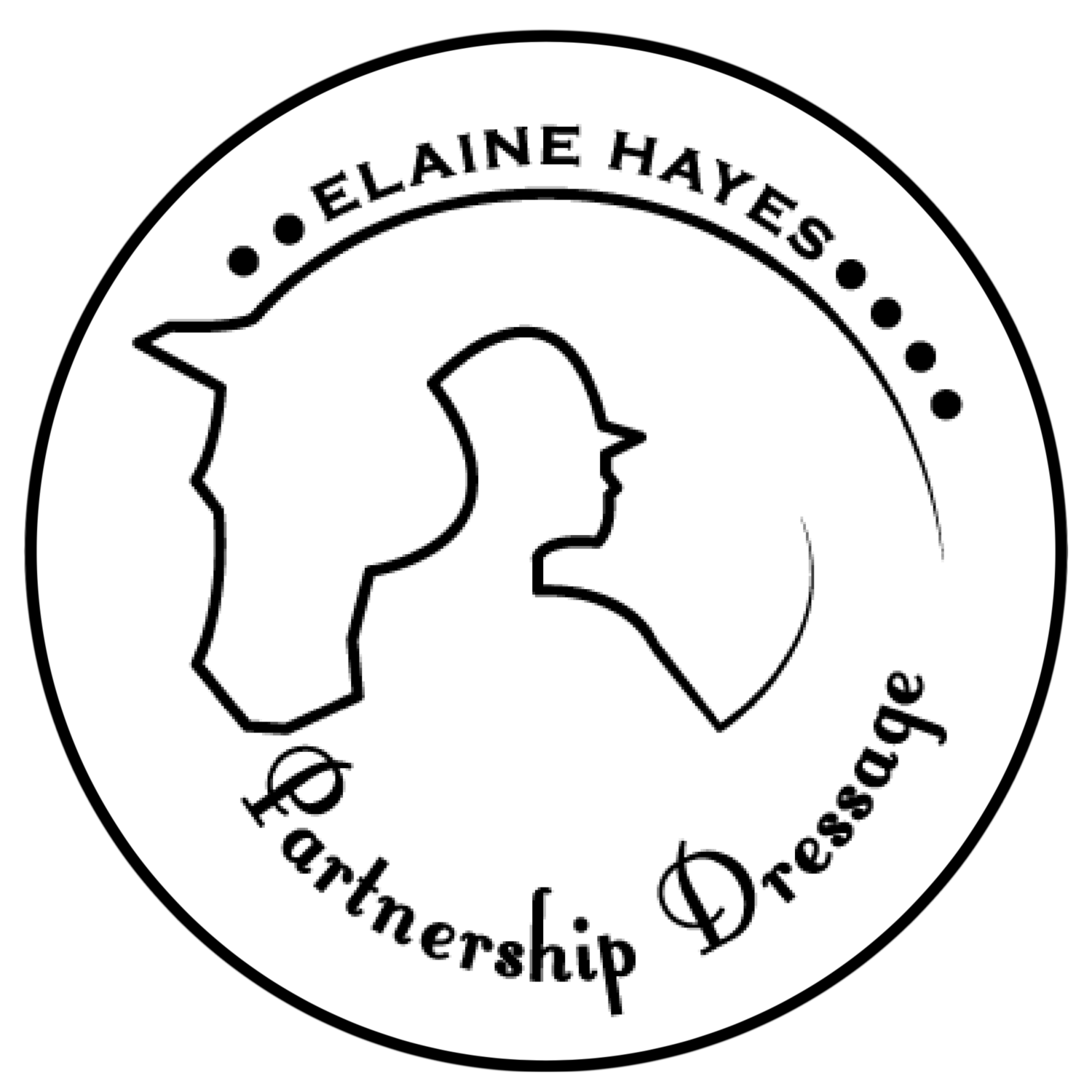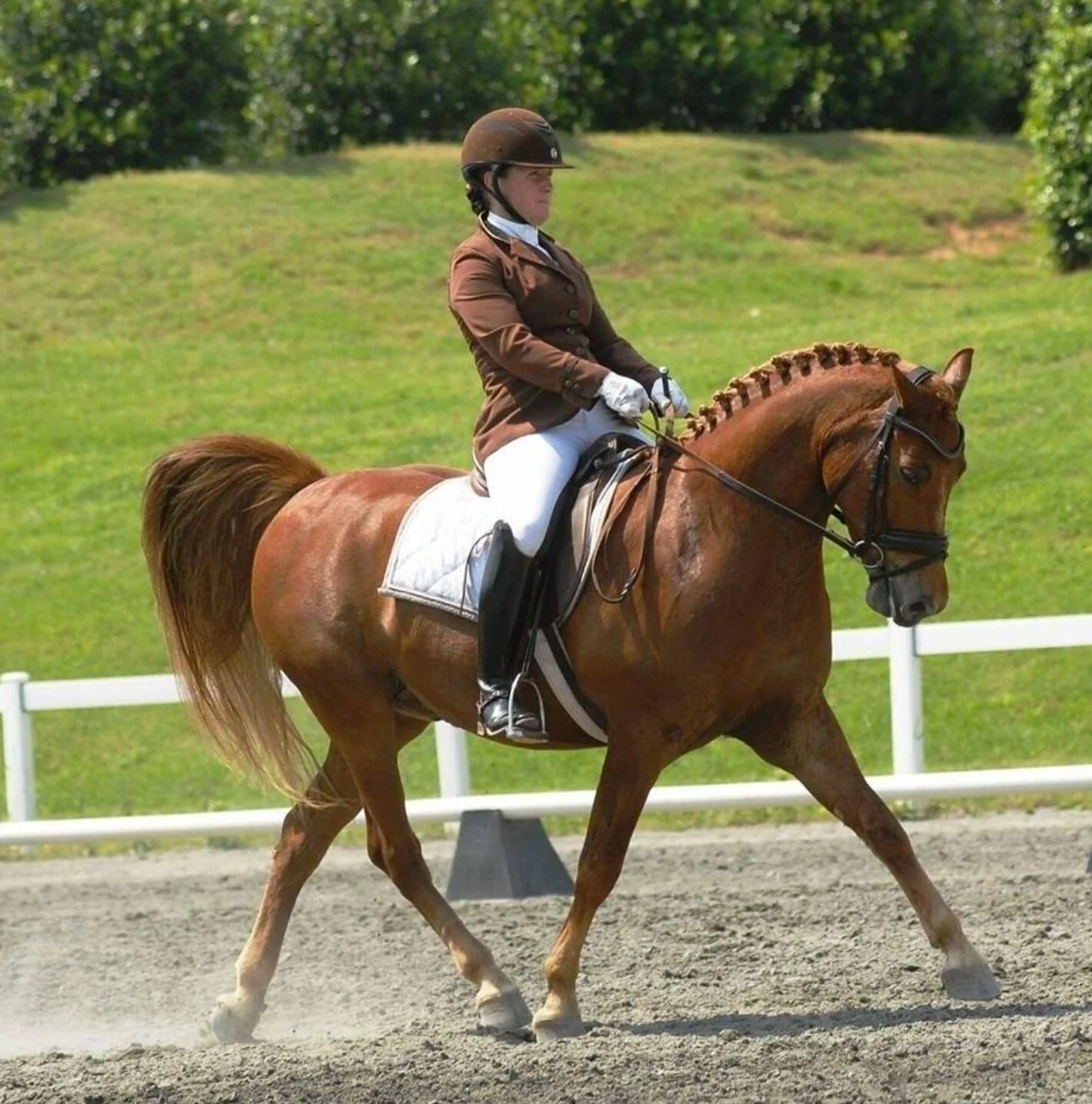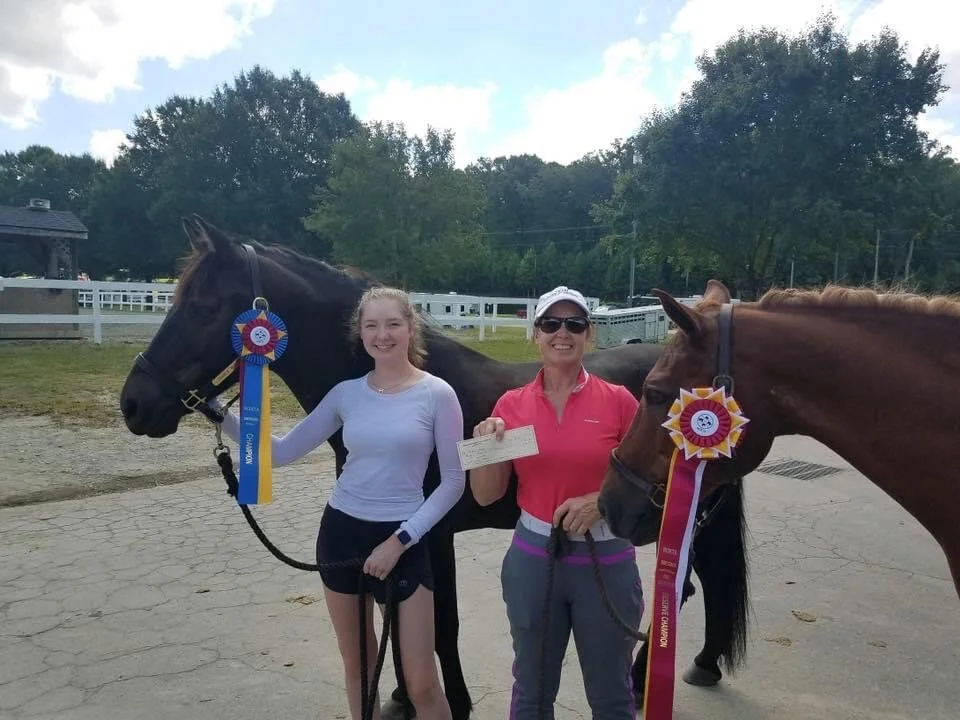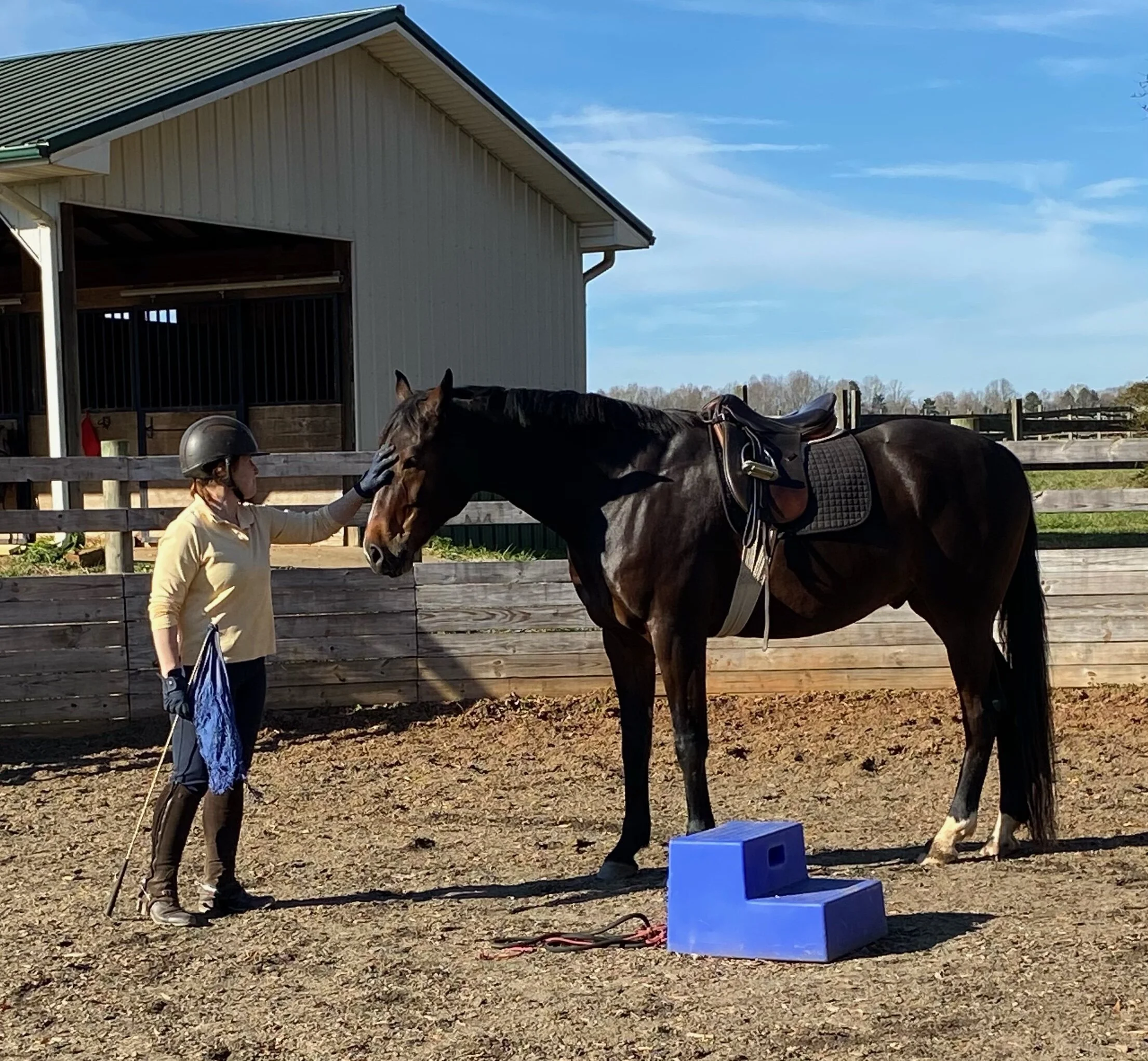
Helping You Listen To Your Horse
Partnership Dressage’s Training and Teaching Programs
Training
Foundational and transformational, horsemanship lies at the core of everything we do here.
When partnership is paramount, we must first establish a shared language with the horse before we request anything. Making sure the horse understands what we are asking is essential to any training method, and this is most effectively done on the ground through horsemanship principles.
We then move onto communicating under saddle with a system that builds on the classical dressage training pyramid. Having already secured their trust through groundwork, the horses understand our requests, and know we have an understanding of them, so they progress quickly through the ridden training, as the foundation of horsemanship is always present and comforting to them. They are confident we see and understand them. From this foundation, there is no limit to what they can achieve!
There is no stopping a truly happy athlete!!
Training Options
Full Training - $750
Half Training - $500
Individual Training rides- $75/ride
Young horses started under saddle- $850/month
“Difficult” or “problem’ horses accepted-these are the teachers!!
Lessons can be substituted for rides in training packages
Teaching
For our lesson programs, Elaine emphasizes rider body awareness and movement through teaching of Feldenkrais principles as the essential building block to success in dressage.
Without a supple, balanced, flexible position—focused on seat—the rider cannot communicate effectively with the horse and will be blocked from achieving true harmony. In all things, we seek to cultivate curiosity, for both horse and rider, through Feldenkrais movement techniques that enable us to “rewire“ our brain to let go of habituated, unhealthy patterns of movement that not only block the movement of energy in our own bodies, but get in the way of allowing our horses energy to get from the hind legs over the back, to the bit, in an energetic but elastic way.
Riding from back to front can only be facilitated if our bodies are a free-flowing conduit of this energy. Feldenkrais practices not only help allow this free movement of energy, it lets our intention or aid be understood by the horse, and because our bodies can move more effectively and with less effort, the horse can “hear” our small, intentional shifts in our posture easily. This is the true language of the horse anyway-small, energy filled intentions, with lightness and quickness-and learning to meet the horse on his level is a game changer.
The horse is happy to move with us and for us because our newly integrated body movements allow and encourage it! Feldenkrais takes much of the physical difficulty out of riding and allows us to concentrate on our mental and spiritual connection with the horse. This is where the horsemanship work comes in. We teach riders how to have clear boundaries and expectations of their horse so the horse can hear them with clarity and connection, therefore empowering them to become happy athletes.
Teaching Options
$115 private lesson
$125 school horse lesson
Group lesson (2-4 riders) $60
Trained and experienced school horses available
No extra trailer-in fee
There are discount packages available.
Elaine recommends….
Certified Feldenkrais Practitioner, Mary DeBono has a wonderful program to increase rider mobility and movement awareness. This is a must for any serious dressage rider and pays many dividends both in and out of the saddle.
Training Success Stories
Quietude Seneca Rocks
From Training Level to Intermediare-1.
How do you turn a downhill pony into a FEI champion??? Slow and steady progress through attention to the basics. No holes here. The sky is the limit for this happy athlete....and don’t tell him he can’t-it’s not where you start, it’s where you finish!!
Seneca is the embodiment of our training system and the very definition of a happy athlete. He is proof that any horse can not only improve, but excel at dressage competition!
From Willful to Willing-The Making of the Wonder Pony
Coming home from another successful horse show with Seneca “the wonder pony” has really got me thinking about what exactly it is that makes him so wondrous. He definitely is NOT the most talented, in fact he’s probably one of the least naturally gifted horses I ride, but what he lacks for in God-given scope in gait, he more than makes up for in heart and willingness. Which got me thinking -why is this so?
This is a pony that came to me for full training partly because he had a bit of a bucking issue, so while Seneca is the picture of willingness now, he most certainly was not born like that. The very first day I put him on the end of my rope halter to do yielding on the ground to establish some boundaries, I ended up outside the arena, red-faced and sore. To this day, he is the only horse that has ever DRAGGED me out of the arena. And he did this twice. A pony. He absolutely will NOT be TOLD what to do and God help the person that tries to do that or even someone that doesn’t pay attention to his reactions! As the old saying goes: “Pray if it’s a pony”!
I often find myself reminding my students to release the aid or make sure they reward their horses because we dressage riders are by nature perfectionists. We tend to skip over the “it’s good right now” moments because, of course, it could always be better. This is a very damaging mindset for the horse and also a slippery slope. Horses, prey animals in the wild, need reassurance and crave safety and confident leadership, so must be rewarded often, some for even the smallest try, to build their confidence and relaxation. I tell my students that what you’re thinking about when you are working with your horse matters and that they should work with the horse like the horse knows what you’re thinking—because they totally do!!!! Their emotional intelligence and sensitivity is far beyond anything a human can even conceive of.
So when I took Seneca out of his stall this afternoon after a long weekend, the last day of a horse show that started out with an FEI test at 8 am, and at a time when most of the other horses had already gone home, I knew he was exhausted. The job I ask him to do is not an easy one for him, not by a long shot, especially at this level. So I paused to think about that and what I could do for him. I thought I’m going to give him a very short warm him up and I’m gonna ride him in the snaffle. And I’m going to give him like 10 carrots in advance (a practice I usually reserve for the END of the riding part). So here’s how our conversation went…
ME: “Hey buddy, I know you know you have to go perform again, that’s why you’re still here. I think you’re amazing and I know you can do this one more time. I know you love your music and you love prancing around and showing off. I promise I will do the very minimum before we go in the arena and I’m just going to ask you to try one more time as hard as you can to get up to do this tough work I’m asking of you. I am so thankful that you try so hard for me and you know I will honor who you are every day and I will always be fair.” SENECA: “OK!!! Let’s go!”
OK so maybe I didn’t say ALL of that out loud (and of course, he didn’t talk) but he knew, he most definitely “heard” me. So there was nary in ear pin when I put the saddle on, and as he does everyday at home, he put his head down for the bridle and opened his mouth for the bit as he sniffed me for some sugar, (which I gave him) and off we went in the late afternoon heat of early September in NC.
I think Seneca is proud to perform because he is happy in his work and always free to express himself. He doesn’t HAVE to be on the aids, I just work to make it the easiest place for him to be so he WANTS to be there. I try never ask him (or any horse) to do something in a vacuum. They all know the release is right around the corner and all their efforts will be acknowledged. They have been trained to know clearly what their job is, and they know the fairness of my expectation. I treat them as they are every day, no matter how different that is from the day before. I try not to come with a preexisting story in my head but instead let them tell me what is happening today. And then we move forward from there and try to improve on what we have in any given moment the all the while rewarding everything they try to do, no matter how small. This is the way I train and I try to be the best trainer for every horse on any given day. It’s not always easy to be that in the moment but this is an important component to becoming your horses ally and partner instead of a dictator and someone they fear more than respect. The beauty of the horse is they give you back EXACTLY what you put in, every day, all the time. If your horse has a behavioral training problem, you need to look in the mirror. That is where all horse training problems lie. It is an unpleasant truth, but one that any good rider must choose to search for and unpack if they have the goal of becoming a true horseman and have real partnerships with their horses.
I appreciate Seneca for who he is, not just who he might be or what he might win. I enjoy the partnership with him every day. I am mindful about what I ask for--both how much and how often. This builds trust and a spirit of cooperation. I ask, then I listen. I don’t tell and expect compliance. Unfortunately, the latter way is much more common, but it’s no way to instill willingness or try in a horse.
Sometimes riding is not pretty. Sometimes your horse really wants to look at the cow in the next field or the horse in the next arena or a venders' plastic bag next to the warm up. Sometimes I go around with my horses head in the air to let them look, it might not be pretty but it’s effective in letting them know we are understanding of their nature and flexible in our requests and that we are trustworthy and fair. Instead of telling them where they should be and telling them not to look, I simply try to make being with me better. I try to set it up so the horse CHOOSES me and not the scary thing. These moments are like deposits in the bank....they increase our capital with the horse and make it possible to make withdrawals later. (Like this afternoon!) The more deposits we bank, the more withdrawals we can make without issues.
The “proudness” Seneca displays is a joy to ride and I suspect that is why he is able to get scores far beyond what his natural ability allows. It is FUN to feel him get “big” and puff up in the arena. I believe that proudness is an by- product of the freedom he enjoys to be himself everyday and not just a dressage machine drilled into submission. I treat him as an individual and I know he feels that and appreciates it. I am truly humbled by the heart of this little Morgan, and he captures my imagination every day, not just days where he wins. Honestly, I don’t even care if he wins (most of the time he doesn’t) but he always brings his “A” game and he has never disappointed me. He does the best job he can simply because I ASK it of him, and for that I am beyond grateful, not only to him but to his supportive owner that has allowed me to play with her pony in the dressage ring for so long. This, my friends, is real winning, whether you get the blue ribbon or not!
In the end, perhaps it is unsurprising that Seneca and I have become such a good team, it’s like we were made for each other: the hard-working single mom, trying to run a horse farm, and the downhill, undersized, West Virginia bred Morgan pony with limited movement for dressage, but still dancing all the way up the levels and having a blast doing it!!!
So honor your horses, work on your end of the partnership, make some more deposits, and then come join us out here to show off in the show ring!! Let’s get back to what always drew us to horses in the first place… Fun!
-Elaine Hayes (Seneca’s chosen dance partner)

Follow Seneca’s journey.
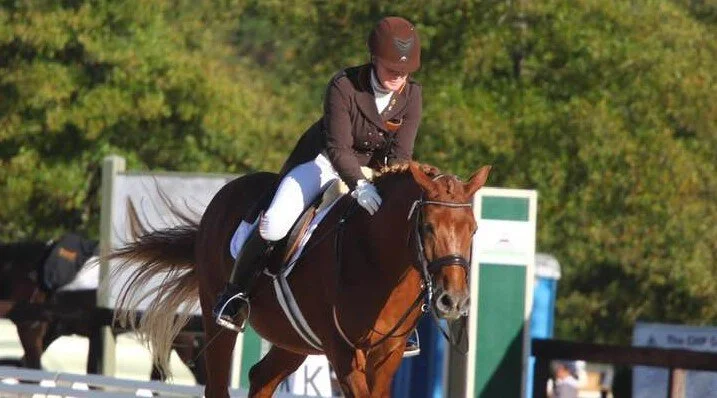

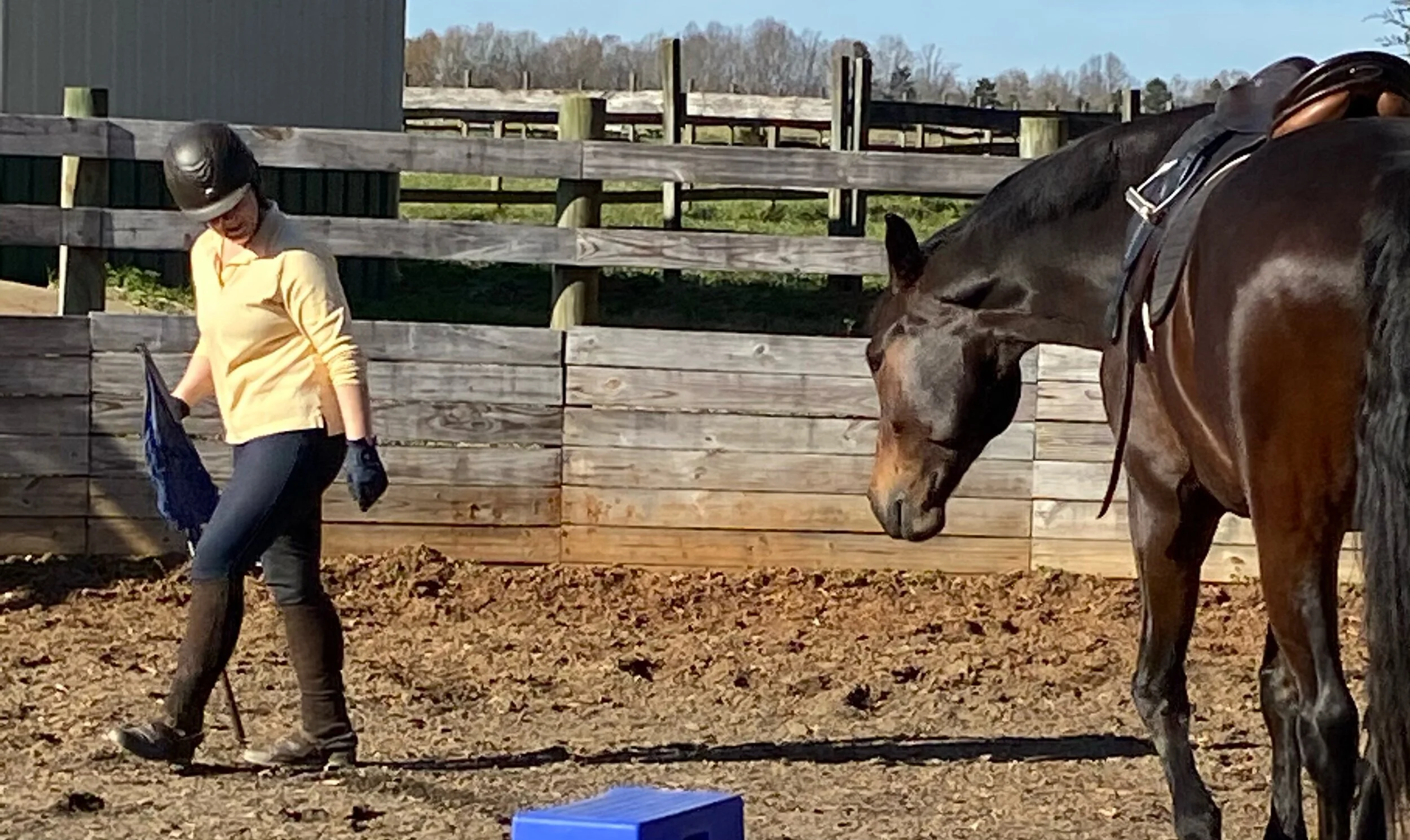



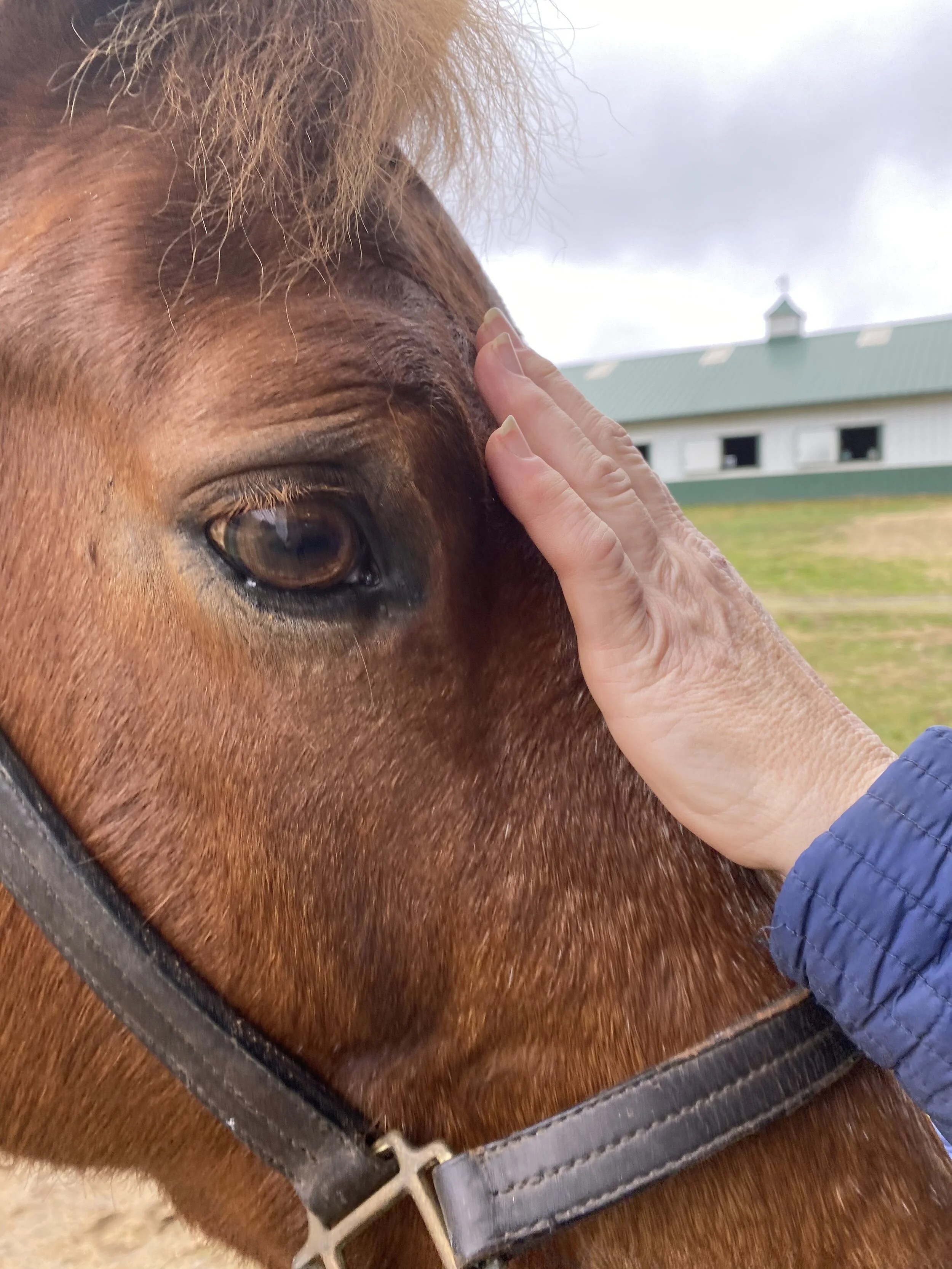

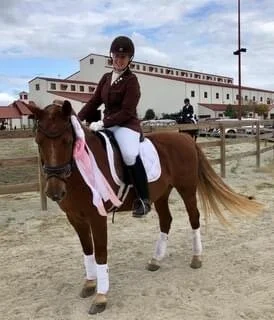
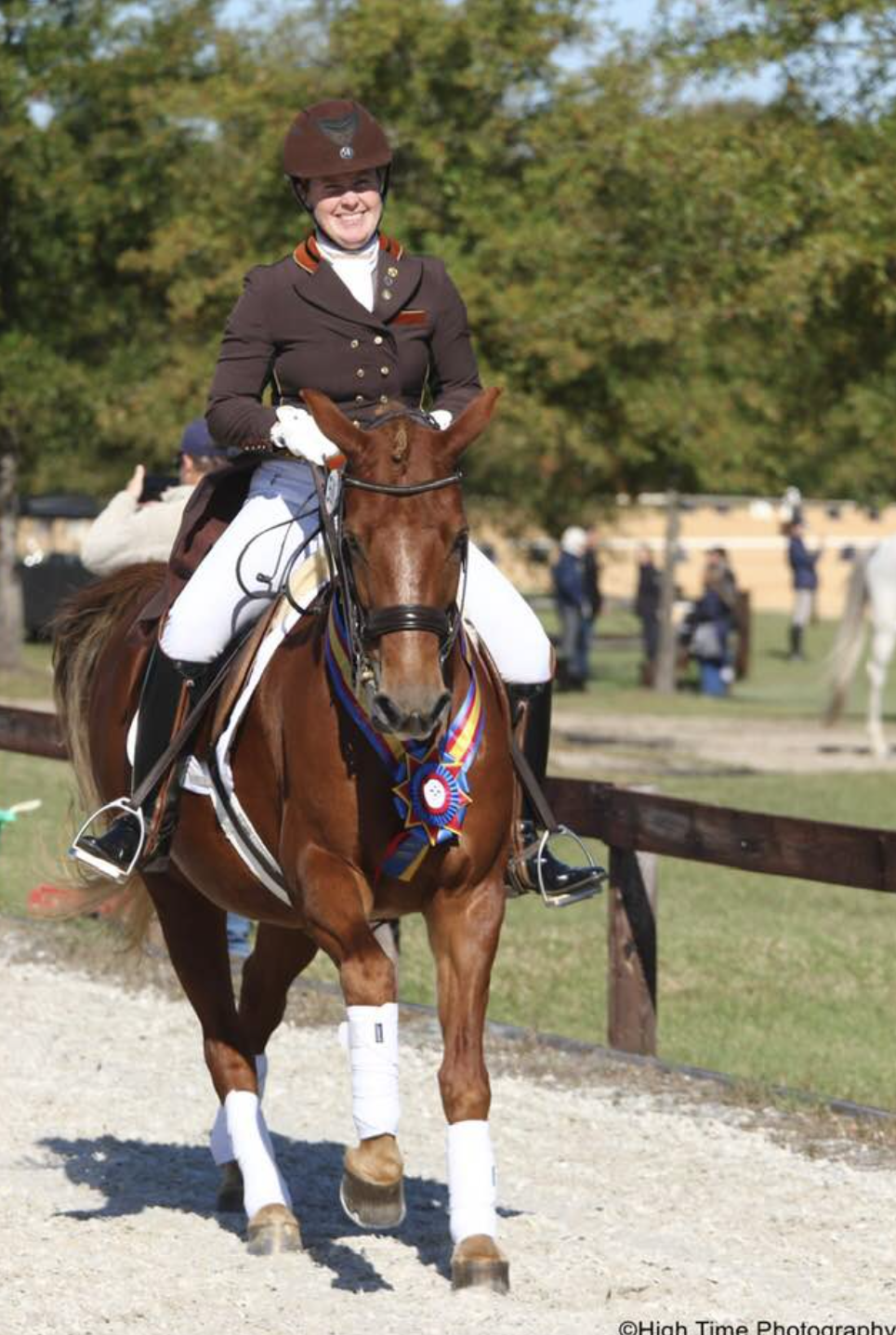

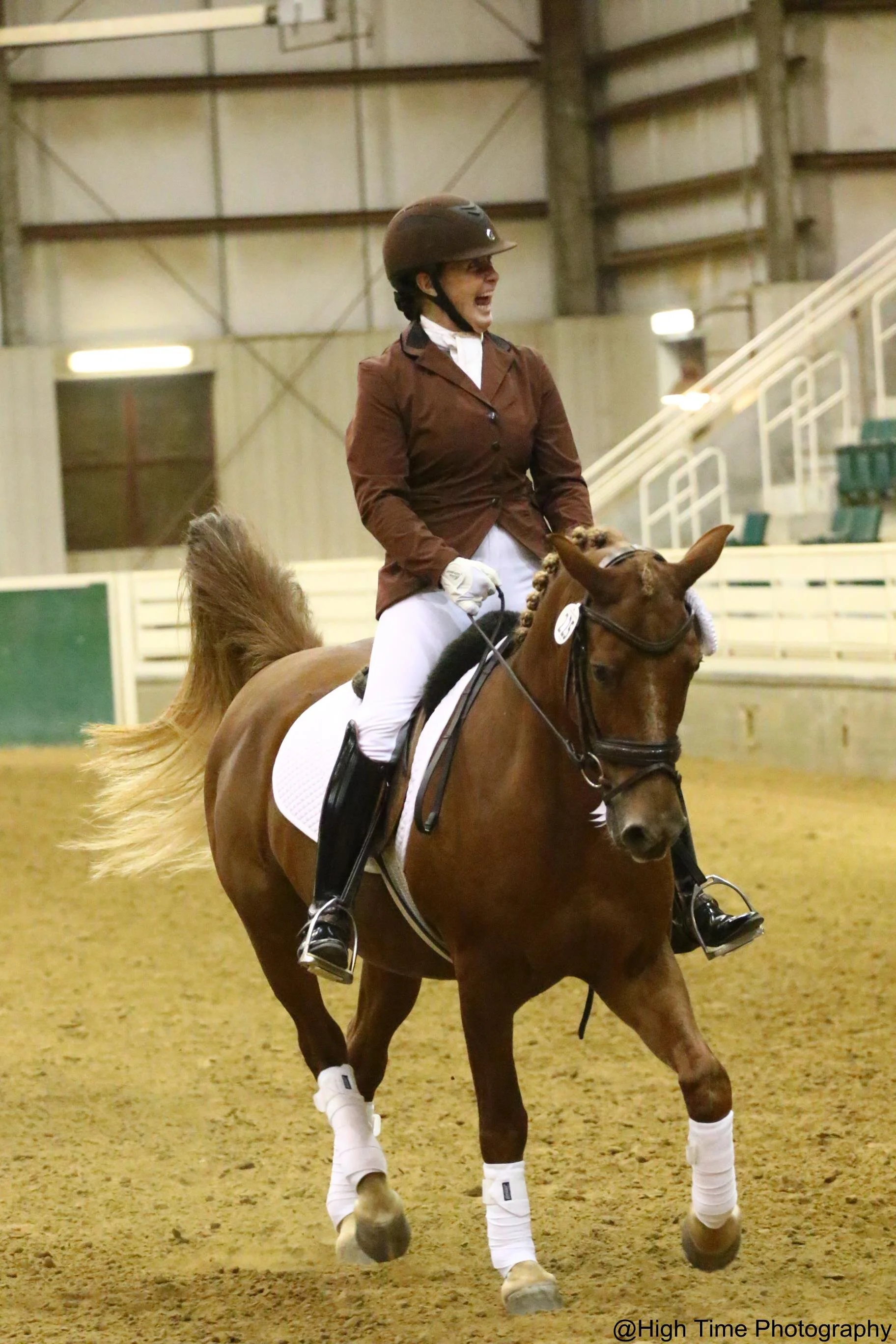
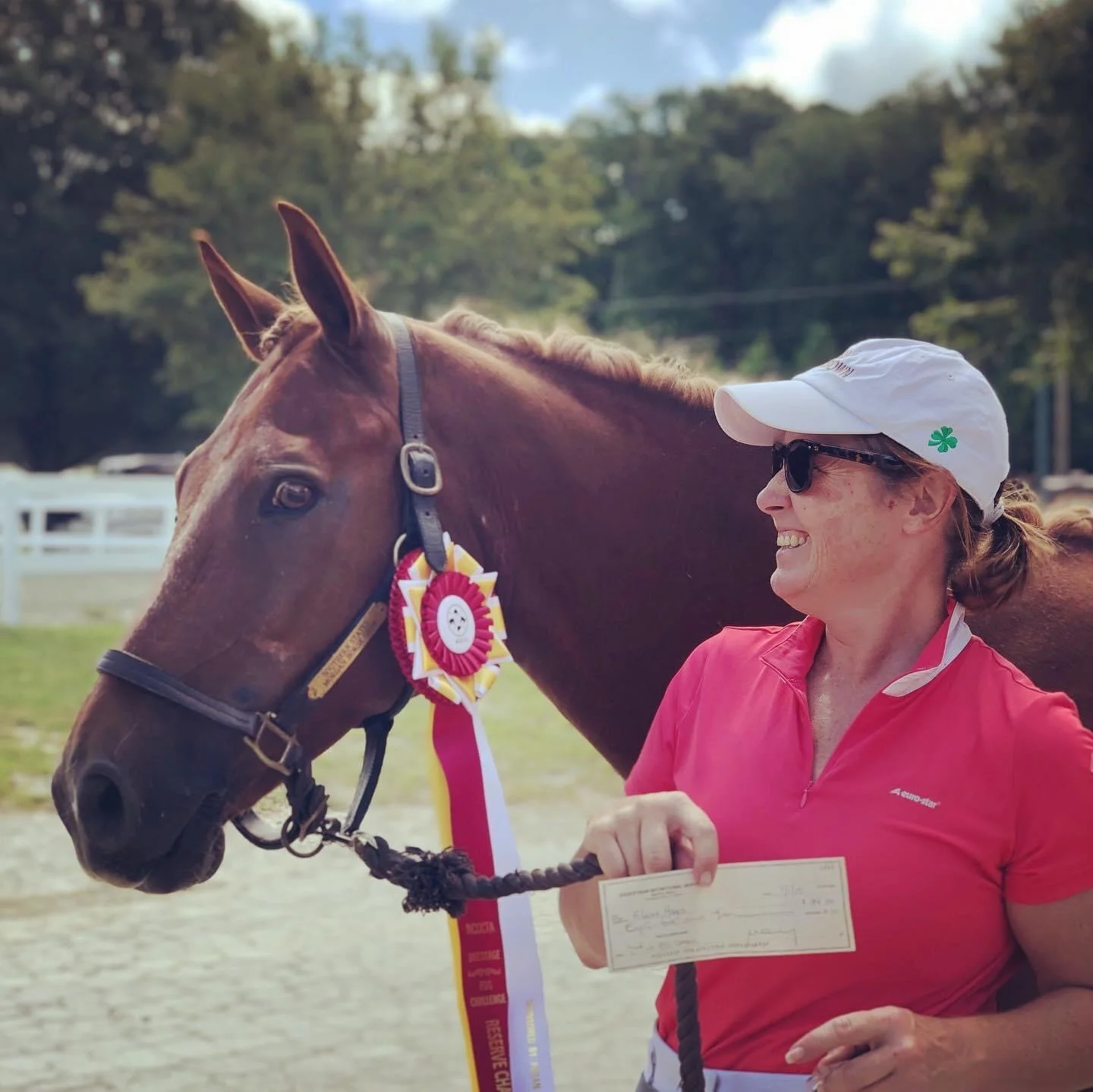


Horse training is simply giving the horse a clear choice in every moment. Choice is the absence of force.
—Elaine Hayes
